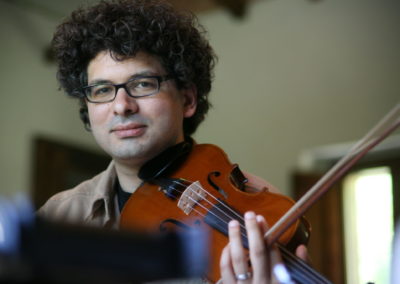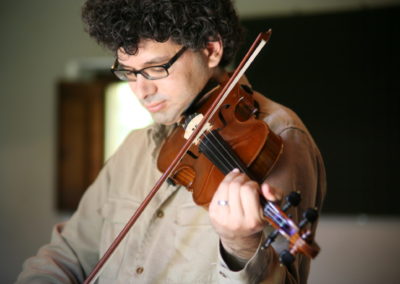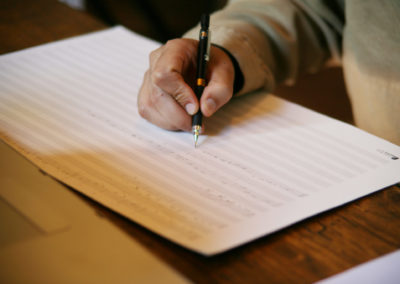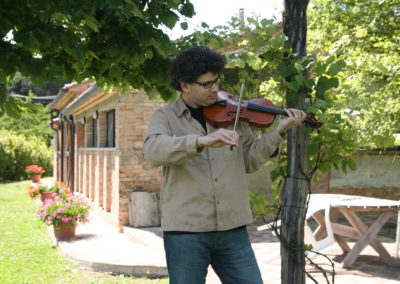Still is musically indebted to Mozart’s Sinfonia Concertante, whose instrumentation it shares. The piece’s point of departure is the first entrance of the soloists in the Mozart concerto, which occurs in tandem on a long, sustained note above the orchestra. This elongated, hovering, perhaps joyous tone is but an entrée to the soloists’ material in the Mozart. In Still, it is the central material of the work. Still is not virtuosic in the traditional sense; rather, it is melodically austere and expansive in a different way from the Mozart. To concentrate on beauty inherent in producing sound, as a physical act and sonic phenomenon, is the essence of Still. The violin part explores the upper range of the instrument, becoming an extension of the sound of the viola, merging the two soloists into one voice. The orchestra provides an underpinning for the soloists, but also presents harmonic possibilities that do not necessarily resurface in the solo parts. Every moment in the orchestra is unique and unanswered. Toward the end of the piece, there is a noise cadenza, the negative of what the piece has been. Removing the pure tones of the melody, all that remains is residual noise. Not merely the diametrical opposite of purity of tone, it also represents the extension of the violin’s exploration of its highest register, which dissolves into chaos at its farthest extreme.
The ability to produce and sustain a truly beautiful tone, to find the richness in dramatically restricted material: these are feats as difficult as the most complex passagework. Thus Still has its own sort of virtuosity. As the title suggests, quietude and stasis are sought throughout the piece. It was written during a fellowship at the Civitella Ranieri Foundation in Italy. It was there in the Umbrian countryside that I was able to shut out the noise of the world and focus on the internal space where I discovered Still: a virtuosic task of its own sort.




